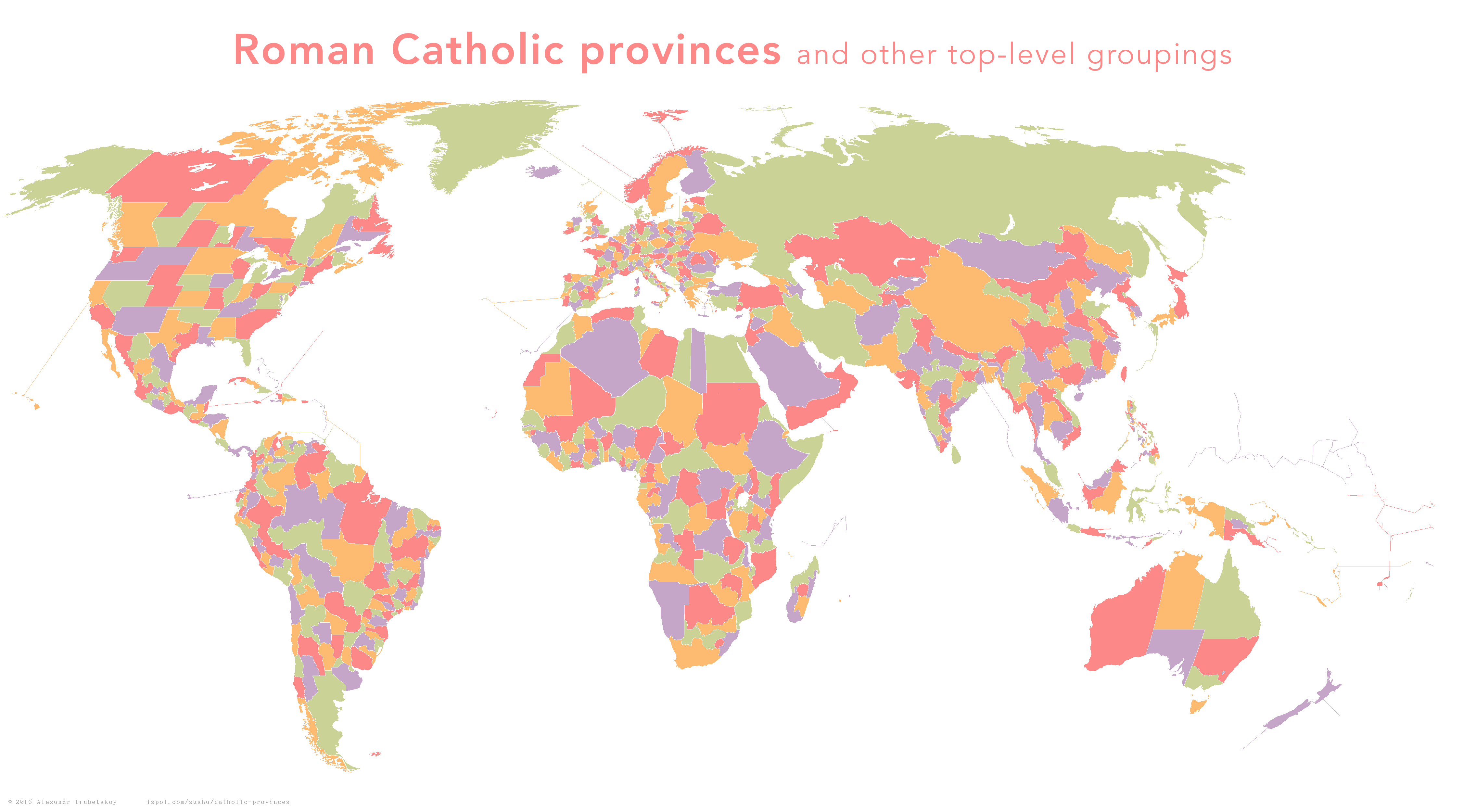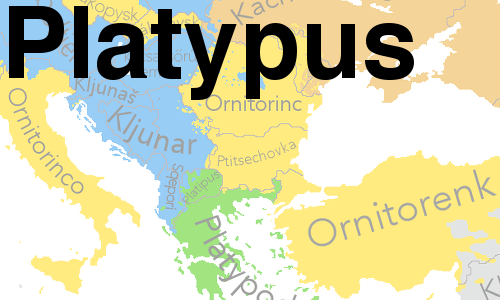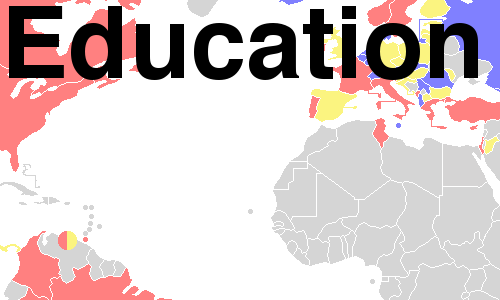Every Roman Catholic province
Posted on 17 February, 2015 at 4:00 PM

This map shows the provinces of the Roman Catholic Church, as well as archdioceses where provinces are not established.
Originally, the administrative divisions of the Roman Catholic Church centered around the borders of the Roman Empire's provinces. But even after the fall of Rome 1500 years ago, the Church kept its diocese boundaries at the Ancient Roman lines as a matter of convenience amidst Europe's turbulent politics. The Church's expansion into the New World meant that dozens of new provinces were created, in the spirit of their ancient counterparts. With the rapid growth of Catholicism in Africa and Asia during the latter part of the 20th century, these administrative divisions multiplied in those regions as well.
Today, nearly every corner of the globe has been incorporated into the Catholic administration. Interestingly, every subdivision can be thought of as a continuation of the Roman Empire's province system. These provinces are one of the few modern institutions that survive as direct relics of Ancient Rome.
Re: about Russia—
Yes, the number of Catholics in Russia is very small. In addition to Orthodoxy being dominant culturally, there is the stigma against the Catholic Church, with it being perceived as corrupted. That's not to mention that historically, Catholic nations like Poland, Lithuania, the Teutonic Knights or Sweden (before the Reformation) tried to subjugate and convert Russia.
Re: about Connecticut—
Interesting point about Connecticut. Rhode Island is actually included with Connecticut itself. I think the rest of New England is all one province simply because historically the populations of the two would be almost equal. Nowadays it's something like 4.5 million for the Province of Hartford (CT+RI) and 9.9 million for Boston Province (rest of NE).
Re: about Libya—
The divisions in Libya technically aren't provinces, it's sort of an exception to the general pattern. Basically, each of those units in Libya is directly responsible to the Vatican, which means they're all technically "top-level" divisions despite not being full provinces. The same thing is in Guinea-Bissau if I recall correctly.
Re: North Korea—
Basically, as we all know, North Korea does not have a government that is highly favorable towards, or tolerant of religion (besides their Juche ideology). So effectively all of North Korea was technically placed under the jurisdiction of the Archdiocese of Seoul, even though there are no functioning Catholic churches in North Korea.
The little enclave (green) is the Territorial Abbey of Tokugen (aka Tokwon), which ceased to function after Christians were driven out in 1949. However, the administrative unit continues to exist and is still directly under the jurisdiction of the Vatican, making it a top-level unit.
Re: tradition vs. modern borders—
Although in many cases, like France and Spain, the church's borders were amended to correspond to modern political subdivisions. So in that sense it's a break from tradition there.
Re: Texas—
Texas has a huge population, especially when you factor in Hispanic Catholics. They had to split it in half somehow, looks like they did some arbitrary county split. (Apparently Texas was divided relatively recently, in 2004)
Re: Northwest Territories—
I think the chunk of Alberta is included just because of how low the population is in the rest of the ecclesiastical province. The Archdiocese of Grouard-McLennan, which controls the ecclesiastical province, is located in Alberta.
McLennan is the administrative center. It used to be a bigger, more thriving town and had a larger population of French (and thus Catholics) as well. Now it's a ghost town, but it's still the head of the ecclesiastical province, for old times' sake I suppose.
Re: other, overlapping Catholic jurisdictions—
That's a good point, I'm surprised no one has brought this up. Melkite, Maronite, Ukrainian, etc. Catholic churches do have their own divisions, which are unrelated to the Roman Catholic ones and overlap. I did not include those on the map, for the sake of simplicity. So yes, only the Latin church.
Explaining the Catholic Hierarchy system
I'm not Roman Catholic myself (actually Orthodox), but essentially each physical church building has a parish. Many parishes together make a diocese, which is headed by a bishop.
Dioceses are grouped into *ecclesiastical provinces*. One of the dioceses in the province is selected to be the *archdiocese*, to which the rest of the province's dioceses are *suffragan* (subordinate).
I'm not entirely sure what types of decisionmaking bishops and archbishops would make. My guess is that it mostly has to do with ordaining new priests. Additionally, things like record- or bookkeeping are done by a dedicated staff based on these administrative divisions.
Going off of the stereotype of how centralized the Catholic church is, I imagine that these divisions are pretty significant in terms of internal Church politics and accounting-type stuff. The Orthodox have a similar hierarchical setup, but as far as I know the Orthodox church is not as centralized, and things are still largely done on a local level (as opposed to central dogma).
So... there's my perspective. Hope it helps.
Re: Botswana—
Yeah, the dioceses of Gaborone and Francistown are under Pretoria. I think the region is mostly Protestant so it would make sense that there aren't many Catholics. Plus for many years Botswana and South Africa essentially had one government, I wouldn't be surprised if this division were a relic of that.
This map was made with the help of information from Catholic-hierarchy.org, prepared and updated by David M. Cheney.



